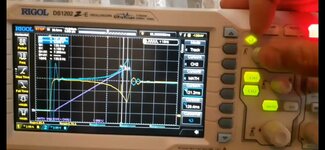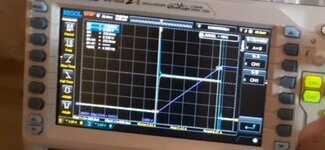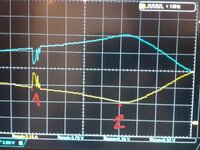Turgay Abay
Newbie level 4
Hello friends.
I almost became sure that we can measure of a Electrical wawe pulse''s spent energy with multiply Voltage and Current and take the result's integral with Osiloscope MATH function . I am working for a special experiment shown at picture ( Not translated to English yet and red text is enough for questions ).In the experiment we are giving DC current for a very short time (about 100-200 ms) and measuring
1- How much energy TOTAL spent ?
2-How much energy spent for COIL HEAT LOSSES? ( COIL'S resistance is 1 ohm ) For second question i multiplied current x current and i accepted the result wawe as a power wave again like first question's answer (because R=1 ohm and I x I = I x I x 1(R) = I.V) then i took the integral with scope again for energy measuring
1-..DO YOU SEE ANY MISTAKE about circuit or measuring way ?
2- Have you got easier way to measure these?

I almost became sure that we can measure of a Electrical wawe pulse''s spent energy with multiply Voltage and Current and take the result's integral with Osiloscope MATH function . I am working for a special experiment shown at picture ( Not translated to English yet and red text is enough for questions ).In the experiment we are giving DC current for a very short time (about 100-200 ms) and measuring
1- How much energy TOTAL spent ?
2-How much energy spent for COIL HEAT LOSSES? ( COIL'S resistance is 1 ohm ) For second question i multiplied current x current and i accepted the result wawe as a power wave again like first question's answer (because R=1 ohm and I x I = I x I x 1(R) = I.V) then i took the integral with scope again for energy measuring
1-..DO YOU SEE ANY MISTAKE about circuit or measuring way ?
2- Have you got easier way to measure these?



